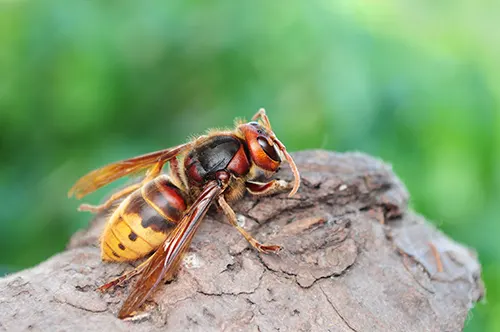30 May 2025

To create a bee lawn, you need low-growing flowering plants that provide stable food sources for pollinators, but you'll also want to fill in your space with low-growing, low-maintenance turfgrasses. Native plants are key to helping out your native bee populations, so use natives when possible. Finally, don't just think about how your lawn can help bees, but your entire landscape. Whether you're seeding, overseeding, or planting, remember to review label directions for best planting times, how to care for seedlings or new plants, and what to expect as your lawn or plants grow. Here's what you need:
Turfgrass: Turfgrass fills in the gaps between plants and ground covers. Fine fescues are favorites for bee lawns because they're lower on water and fertilizer needs compared to other grasses. Kentucky bluegrass is another favorite because it's low-growing and naturally spreads to fill in gaps. If those aren't a great option in your area, stick with a native low-maintenance grass. Also think about a tougher turfgrass to handle foot traffic where you want walkways or play areas for people and pets within your bee paradise. You can find out more about different grass types here.
Clover: Clover is a low-growing ground cover that blooms anywhere from spring to summer depending on variety. Bees, especially honey bees, love clover blossoms and will appreciate a lawn full of them. Dutch white clover, while not native to the U.S., is a favorite for many bee lawn enthusiasts. Another great clover? Strawberry clover, like what we use in O.M. Scott & Sons Clover Seed.
Low-growing flowers: The University of Minnesota, which has great resources on bee lawns, recommends using creeping thyme, self-heal, common violets, and dandelions. Do a little research to find common low-growing flowers that are native to your area; you may be surprised by just how many options you have.
Berry bushes: For your landscaping, consider planting native berry bushes. Not only will you get delicious berries, but these plants are a great food source for pollinators. If berries aren't your thing, consider finding other native plants for your landscape. You want flowers, of course, but take the time to find recommendations that specifically support bee populations in your area.
Trees: Flowering trees provide a great supply of nectar to bees, so consider planting one or two in your yard if you have the space. Opt for a fruit tree, so not only will you be helping bees, but adding fresh produce to your own table. Yum!
Converting to a bee lawn can be a pretty big commitment, so get ready for hard work if you're going all in. You can also try out a small area of your yard and see how pollinators like it. With a little patience, you'll be having plenty of visitors to your lawn—just remember to keep your distance and let them be!
Looking for help with your lawn? Contact Monnick Supply!
Source: Scotts.com